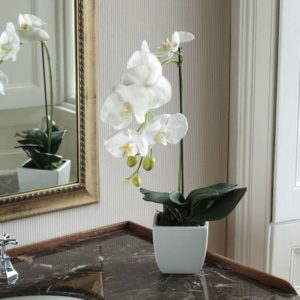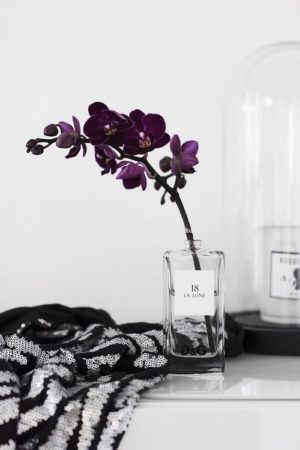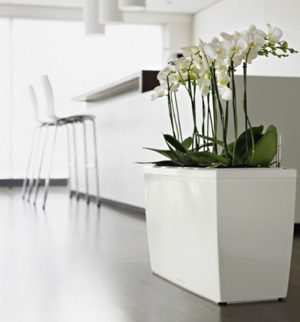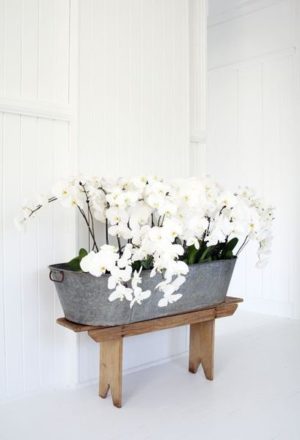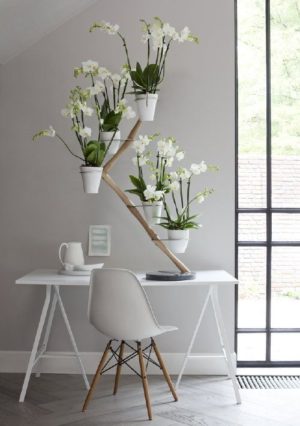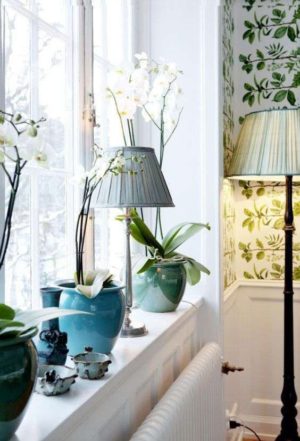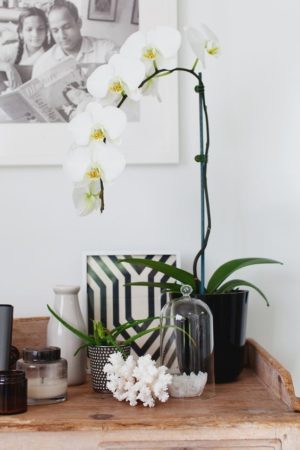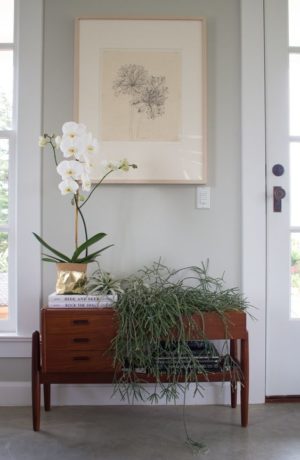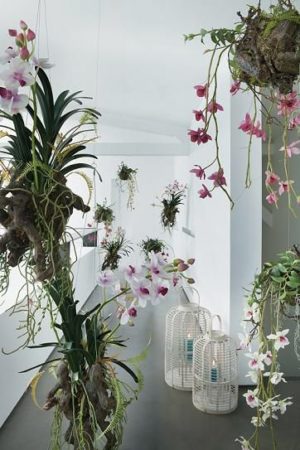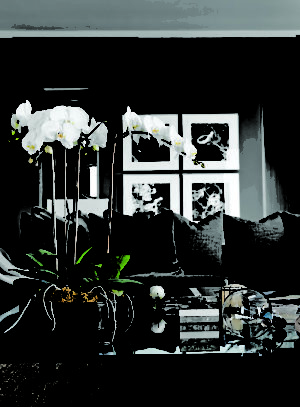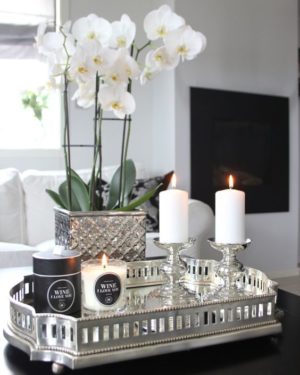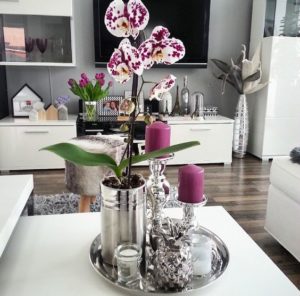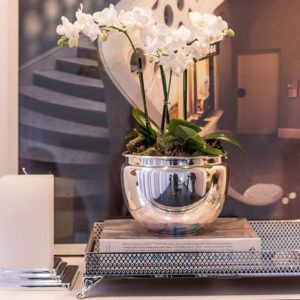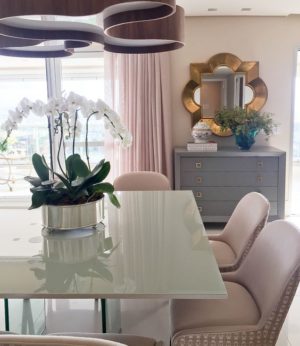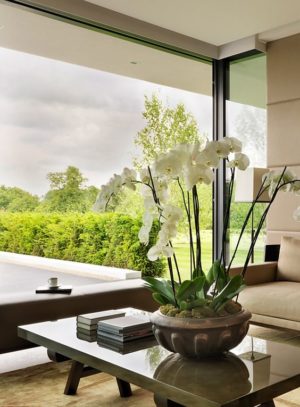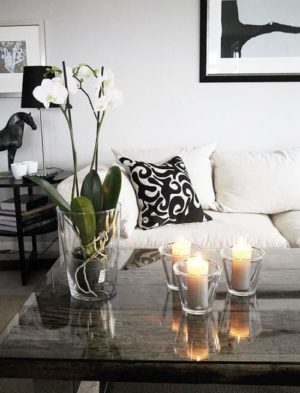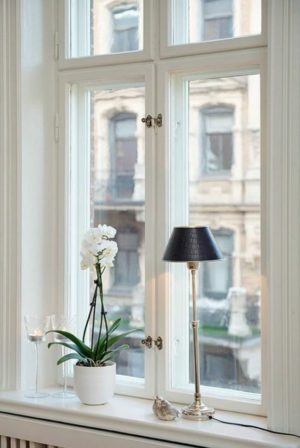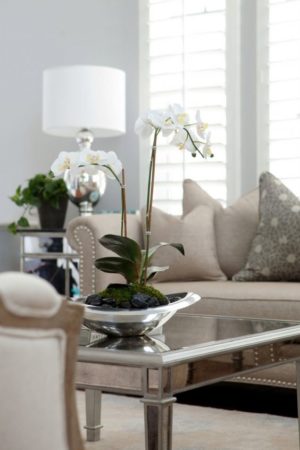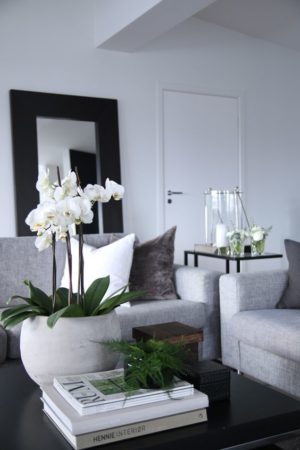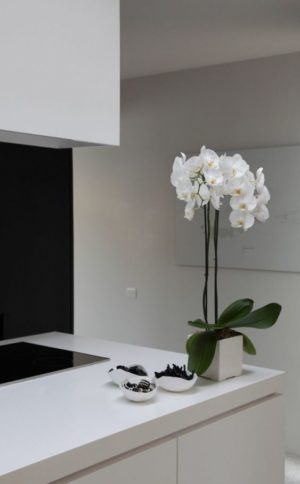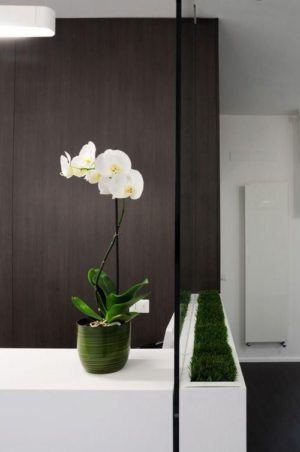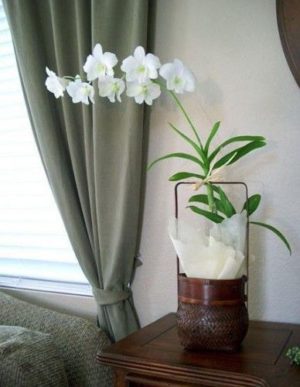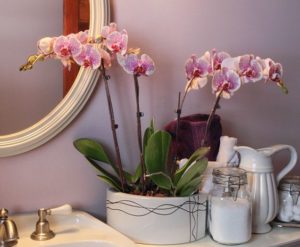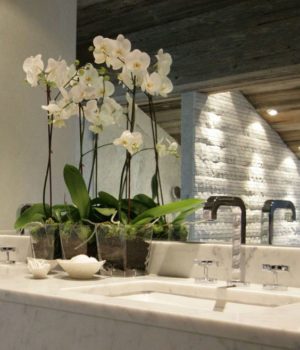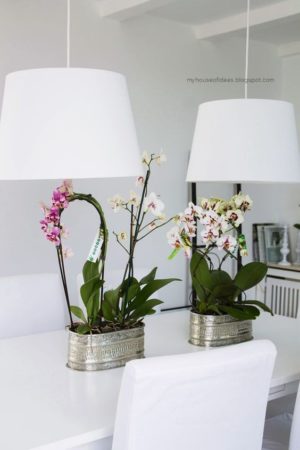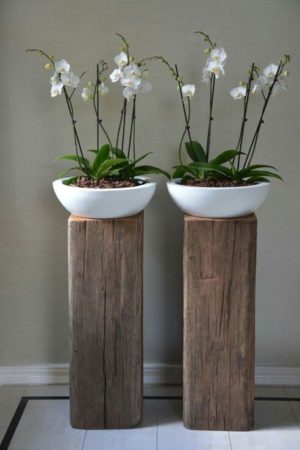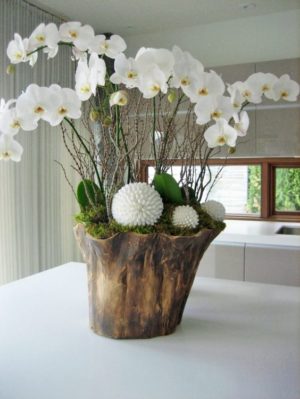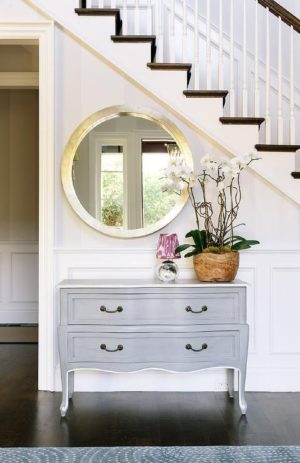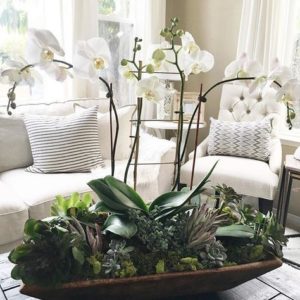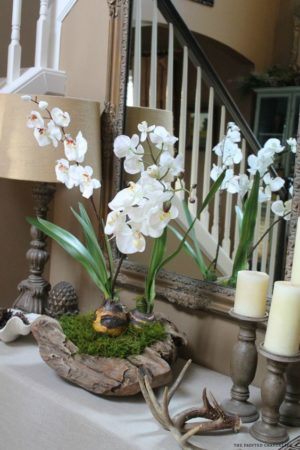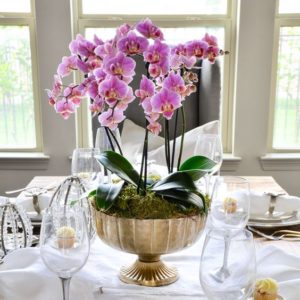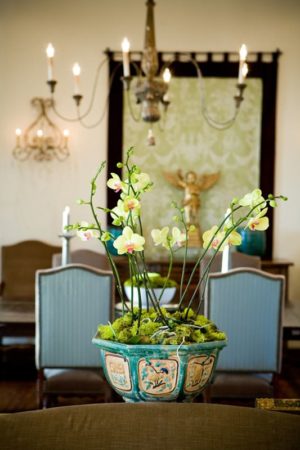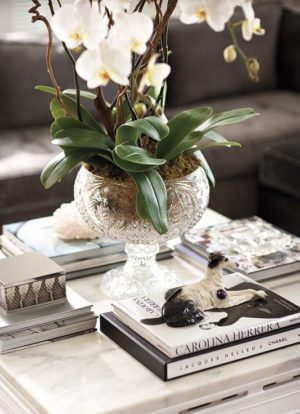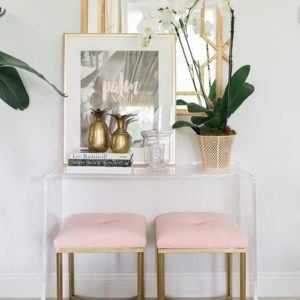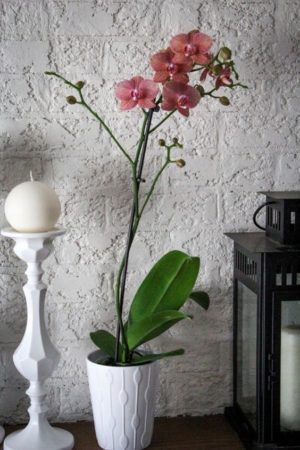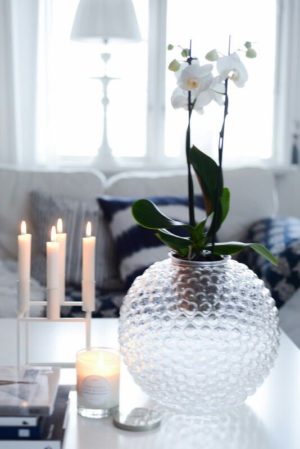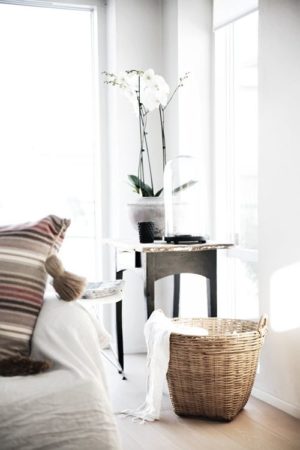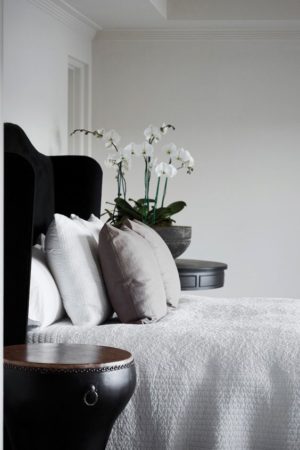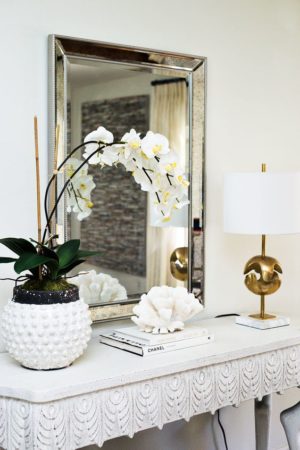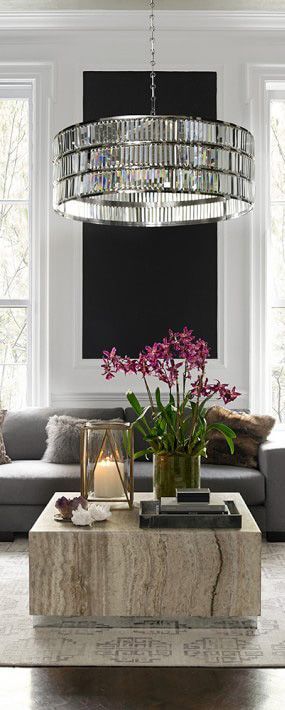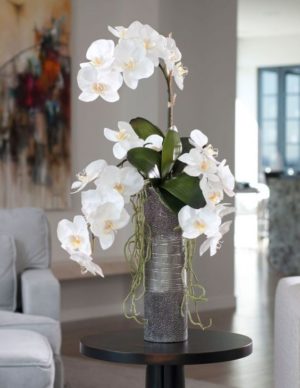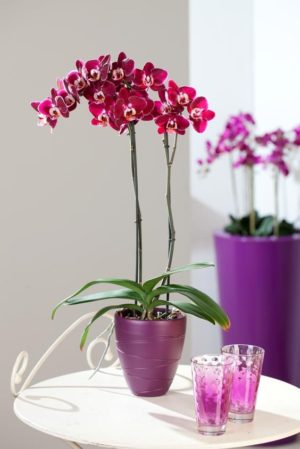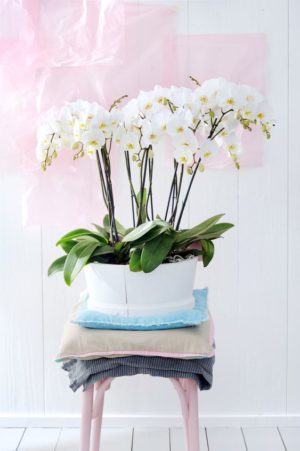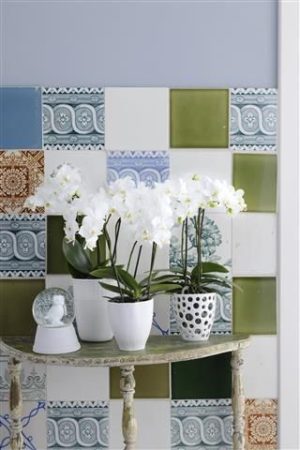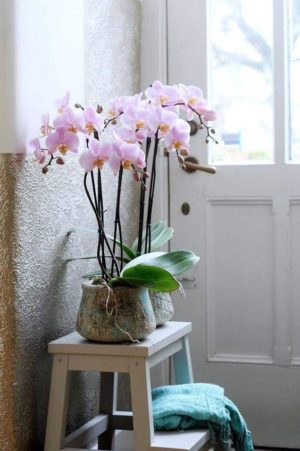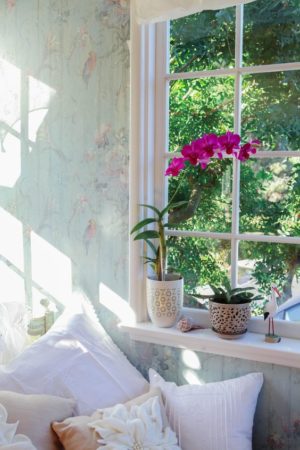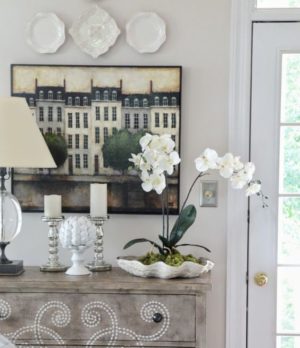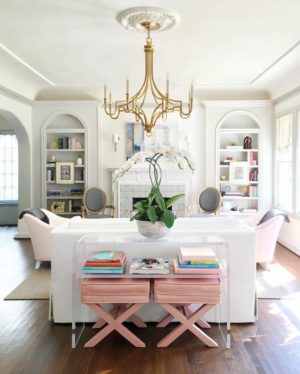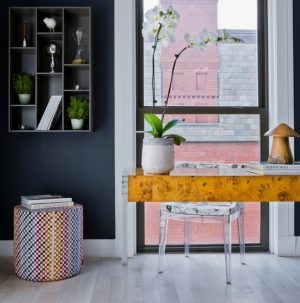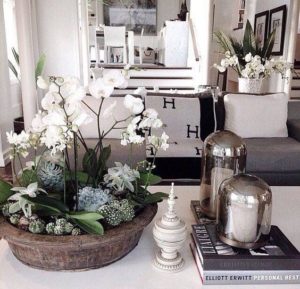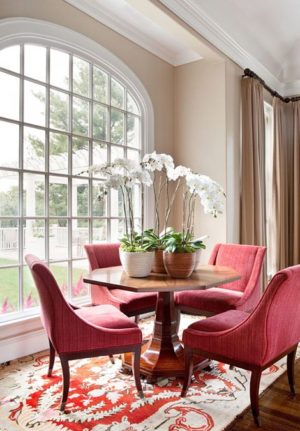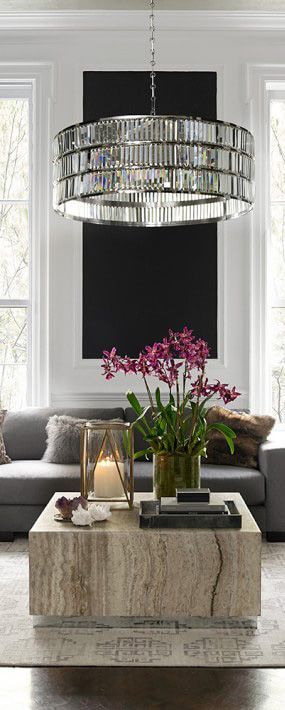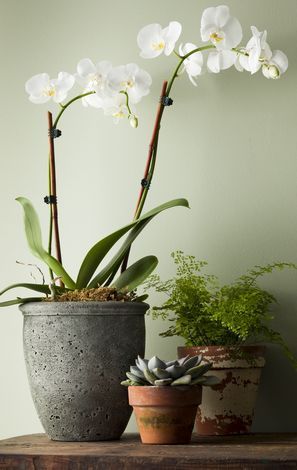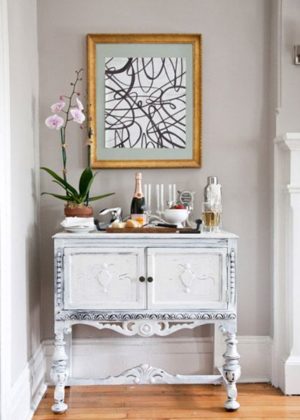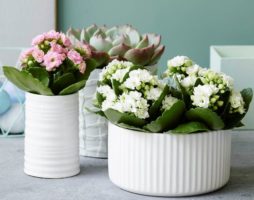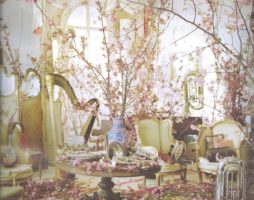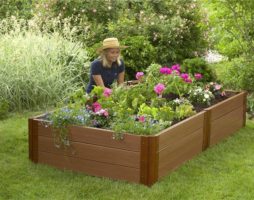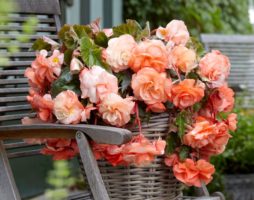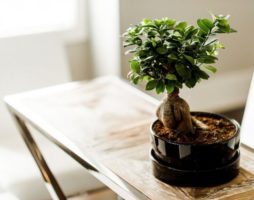Modern lovers of domestic plants do not have to limit themselves in the choice of pets. Shops offer a huge number of representatives of the flora, including exotic varieties. The most popular are various types of orchids.
These exquisite flowers are admired even by people who do not show interest in home floriculture. You should not consider these flowers too capricious, looking at photos of orchids, home care for these plants is not difficult. There are only a few rules necessary to ensure optimal conditions.
Natural habitats, types
Warm moist air for this plant is the main condition. Tropical forests create an optimal environment for them. Orchid, like royalty, avoids intense sunlight. Dense thickets of the jungle provide saving shading, do not allow direct rays to burn delicate leaves.
Tropical forests exist on every continent except the North and South Poles. Orchids can also be found in different parts of the world. Since time immemorial, people have paid special attention to this amazing flower. The Indians collected pistils of the plant, prepared drinks from them. The healers of ancient Greece included flowers in various healing decoctions. The inhabitants of the Southeast Asian peoples considered the orchid a reliable talisman that could protect them from dark forces. Now it is a worthy decoration of the house, a favorite pet of many flower growers.
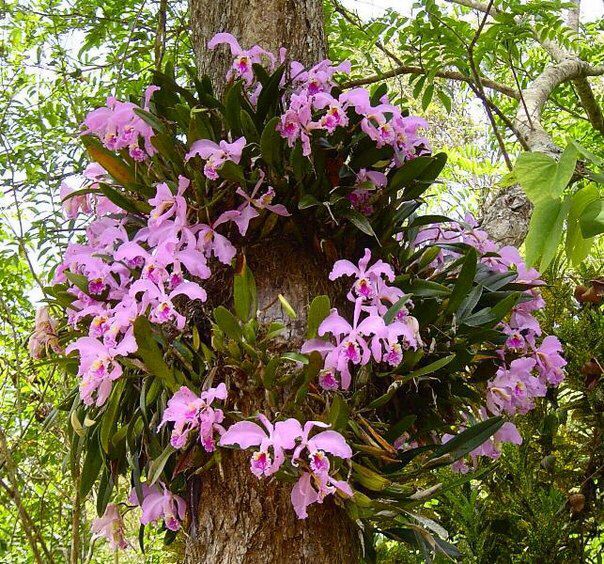
Orchids can be found in different parts of the world.
There are more than 35 thousand names in the list of plant varieties, the color scheme includes the whole range of shades. It should be taken into account when choosing a species, considering a photo of orchids, home care depends on the specifics of growth. These representatives of the flora can grow:
- on a tree trunk
- on the ground,
- on the stones.
Plants differ in their requirements for moisture and nutrition.
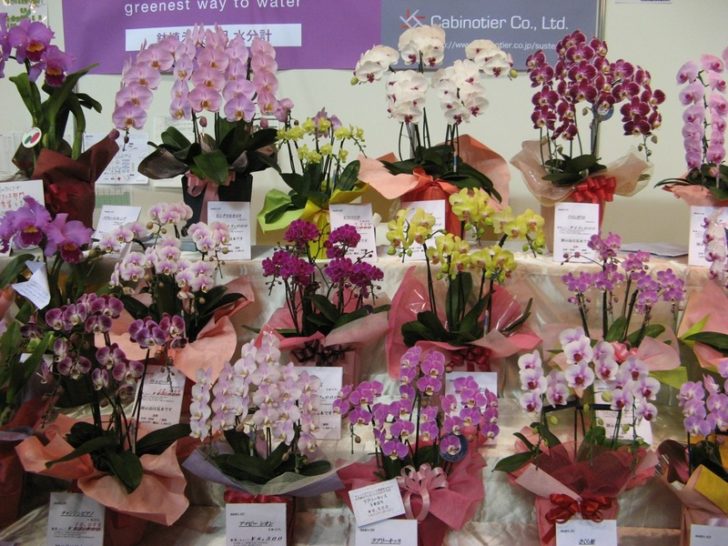
There are more than 35 thousand names in the list of varieties
General rules of care
Orchid varieties have specific care requirements. It is possible to single out the basic rules that are characteristic of all types of these plants. All green pets need high-quality lighting, optimal temperature and humidity. For orchids, the following conditions are comfortable:
- a sufficient amount of light of low intensity;
- daytime temperature - 22-25°C, nighttime - 14-17°C;
- humidity not lower than 60%;
- special substrate.
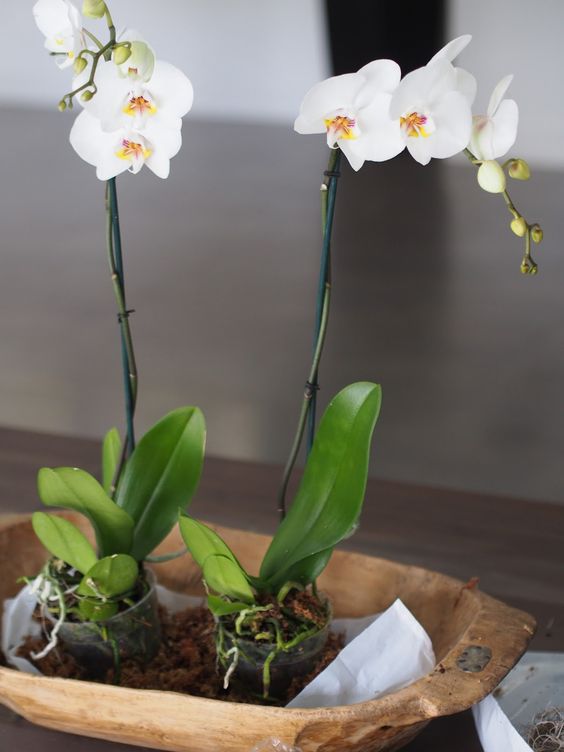
Orchids differ in their moisture and nutritional requirements.
The best places to place a flower are window sills in rooms facing west or east. This will provide a sufficient amount of light, eliminate the risk of burns from direct rays. In winter, it is desirable to organize additional lighting, place a lamp next to the plant. An orchid can grow and develop well and not on a windowsill.But in this case, artificial lighting should fully replace the lack of sunlight.
This representative of the flora loves fresh air, needs ventilation. But there should not be a draft that the plants do not tolerate. You can not place a flower near the air conditioner. During the operation of the heating system, the humidity in the apartments is low. It is necessary to regularly spray the foliage or install a special device.
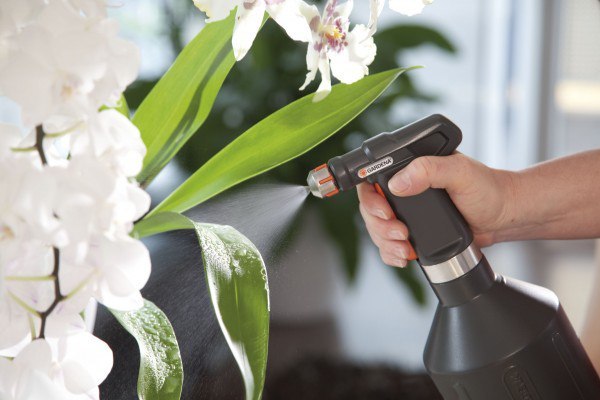
Orchids need to be sprayed regularly
Novice flower growers, people who are short on time, should pay attention to the photo of the Phalaenopsis orchid. Home care for this plant will not require much effort, creating unique conditions.
These plants cannot be planted in normal soil. They can only grow in a special substrate. Such mixtures are sold in stores. You can add seed husks, sphagnum, expanded clay, pine bark, charcoal to it.
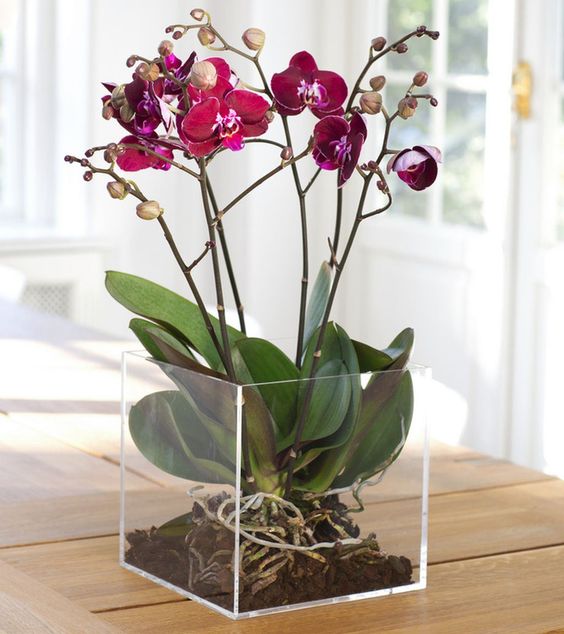
Phalaenopsis does not require much effort, creating unique conditions
Spraying and watering
It seems to many novice growers that a plant native to the tropics needs a lot of water. But this is a delusion. An orchid growing on a tree receives water only when it rains. It immediately flows into the ground, the plant has to be content with the reserve stored in the aerial roots. Excess moisture will harm the root system.
Watering requirements vary from plant to plant. Increased moisture can be tolerated without any problems by Cymbidium or Phalaenopsis, for Oncidium or Cattleya it can be fatal. It is important to water these plants properly. On the Internet there is a photo of home care for Ludisia, Phalaenopsis, Dendrobium, and other varieties. The pictures show how to direct the jet of water.
It is possible to provide high-quality hydration without a watering can. To do this, an orchid in a pot with holes on the sides is placed in water for several minutes, then taken out, the water is allowed to flow out. This procedure is sufficient for a quality supply of moisture.
In watering, the following rules are observed:
- only filtered, settled water is used;
- room temperature is optimal;
- water must not enter the center sockets.
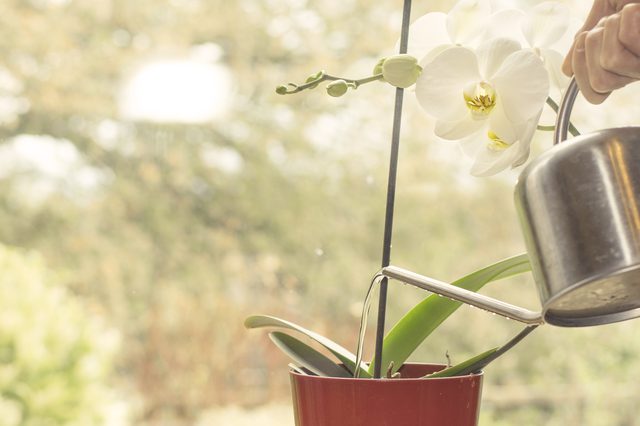
Water your orchids with room temperature water.
Usually these plants are planted in transparent plastic pots that allow you to monitor soil moisture. If the container is opaque, you need to water the flower when the top layer of the substrate becomes dry. During the summer months there is an active growth of orchids. Therefore, they need to be watered more often than in winter.
Spraying is carried out not only during the operation of the heating system. And in the summer, the air may not be humid enough. This procedure should be carried out regularly to provide the orchid with optimal conditions.
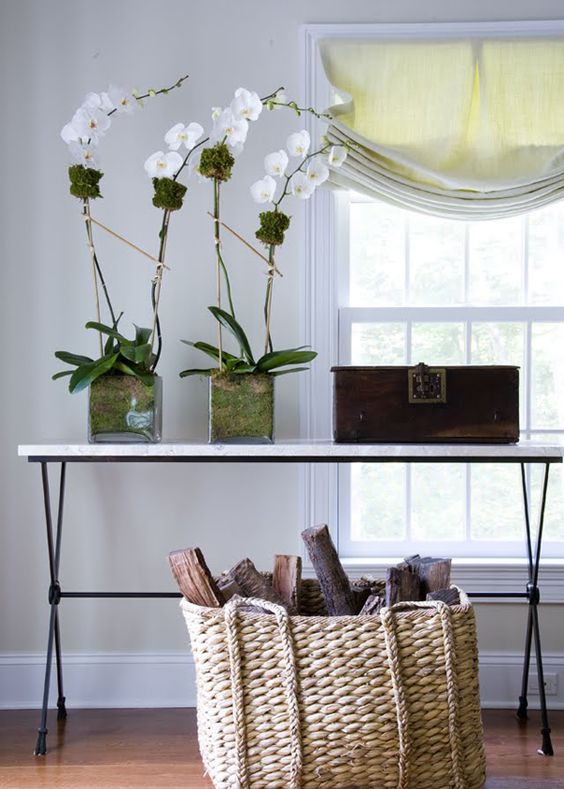
Transparent pot allows you to monitor soil moisture
Pests and diseases
The main pests of these pets include mealybugs and spider mites. They can move from other plants, infection in the store is not excluded. If small areas are affected, you can prepare a solution of laundry soap, treat the orchid. In case of severe damage, Fitoverm will be required.
Most often, flower growers are faced with yellowing of the foliage of the plant. There may be several reasons for this phenomenon:
- natural death of the old leaf;
- root rot due to excess moisture;
- sunburn.
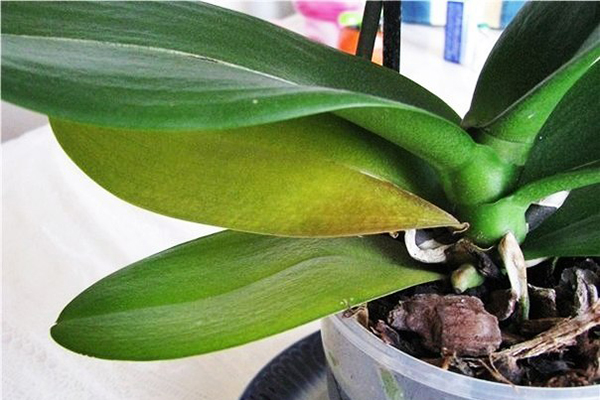
Yellowing foliage may be due to excess moisture.
A yellowed bottom sheet should not be a cause for concern. Gradually, they die off naturally. When the leaf is completely dry, it needs to be cut off. When yellowness appears on young, upper sheets, you need to carefully pull out the plant to inspect the roots. If they rot, the shade changes. It can be brown dark, light gray. Mucus forms on rotten roots.All damaged parts must be removed, the root system processed, the orchid planted in a new substrate. You can look at the photo of home care for orchids, how to properly perform this procedure.
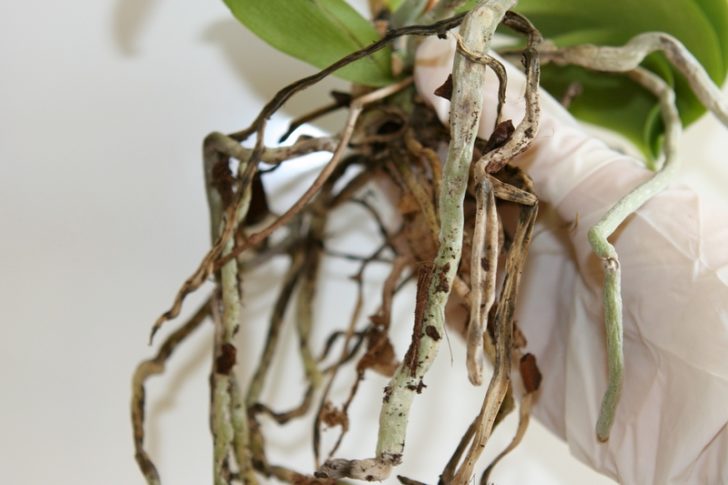
Carefully inspect the roots of an orchid
Direct sunlight can burn the leaf. In this case, a yellow spot also appears. You should put the orchid pot in another place where there is no risk of active sun exposure.
back to index ↑Reasons for the lack of flowering
The succulent leafy orchid system looks attractive. But the popularity of this flower is not ensured by it. Luxurious buds covering a long stem are the main advantage of the orchid. Therefore, the lack of flowering becomes a cause of disappointment for the grower.
This phenomenon does not always indicate violations in the care or diseases of the plant. The lack of flowering may be due to:
- natural dormant period;
- insufficient illumination;
- wrong choice of pot;
- temperature violations.
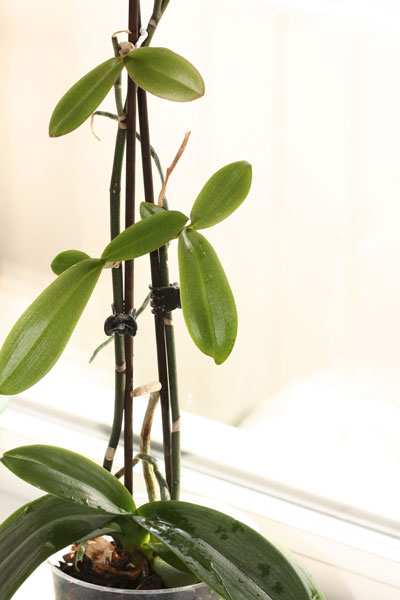
Lack of flowering does not always indicate violations in care
Orchids have a dormant period during which the pet does not throw out flower stalks. This is a natural process. There will be no flowering if the plant is not provided with an increase in daylight hours in winter. The reason for its absence may be a large capacity. Orchids need cramped pots.
You can stimulate the flowering process by creating stressful conditions for your pet. To do this, you need to lower the day and night temperatures to 12°C, 10°C, respectively. It is necessary to keep the plant in this mode until the buds are fully fixed, the buds are formed.
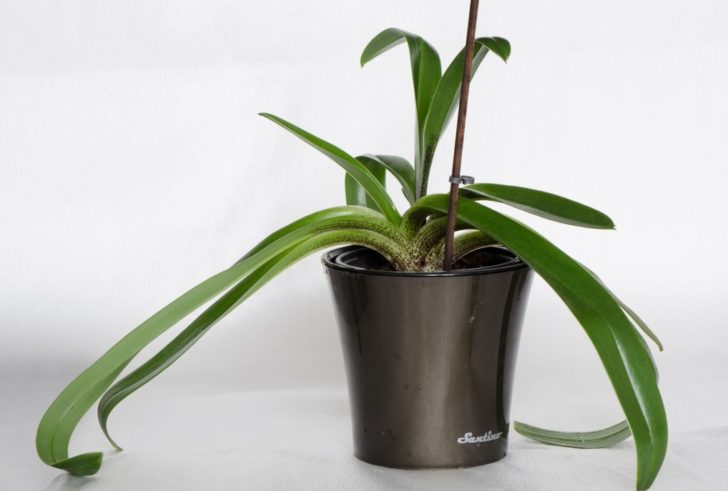
During the dormant period, the orchid does not throw flowers
Features of pet care Phalaenopsis
The perfect symmetry, the precision of every detail, inherent in the charming flowers of the Phalaenopsis orchid, gives them an impeccable look. No wonder the plant is named after a beautiful tropical butterfly, whose wings look like petals. Peduncles, covered with delicate buds, look perfect against the background of a rosette with juicy, dark green foliage.
This variety has another important advantage. You can see in the detailed photos of caring for the Phalaenopsis orchid in its simplicity. Despite its tropical origin, this flower is not capricious; even a novice gardener can grow it.
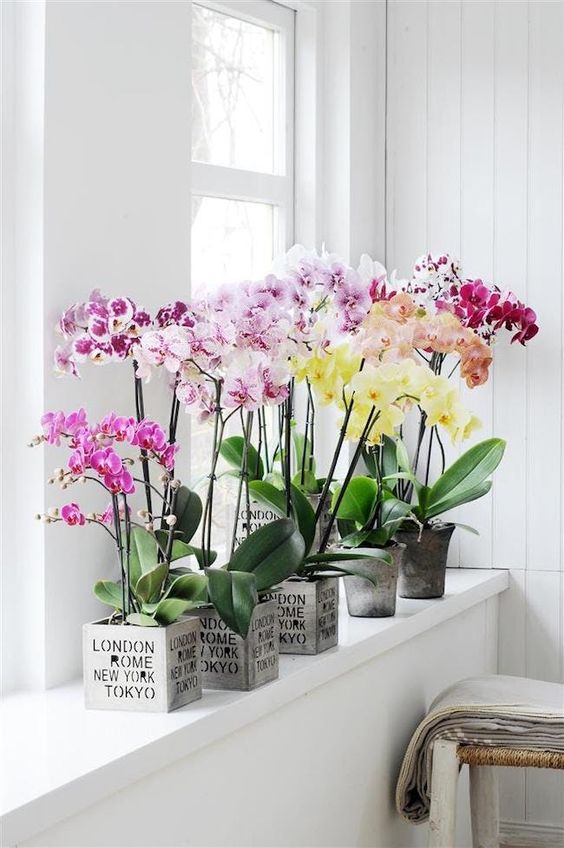
Even a novice gardener can handle the care of phalenpsis
Another advantage of the plant is a huge range of shades that allows you to find your favorite pet. There are varieties in bright and pastel colors, plain and combined. If you are growing several types of Phalaenopsis, do not cut flower stalks of different plants with the same scissors. Shades can be transferred, the original color of the buds will change.
There are several features of growing this variety of exotic plants:
- it is advisable to avoid excessive watering, but the plant can survive abundant moisture without much loss;
- in order for Phalaenopsis to release a lot of aerial roots that provide high-quality photosynthesis, you need to correctly choose the substrate, the location of the flower pot;
- elements of the air root system of the orchid should not come into contact with the soil, plants in other pots;
- in Phalaenopsis, the dormant period is not pronounced, flowering can be observed three times a year.
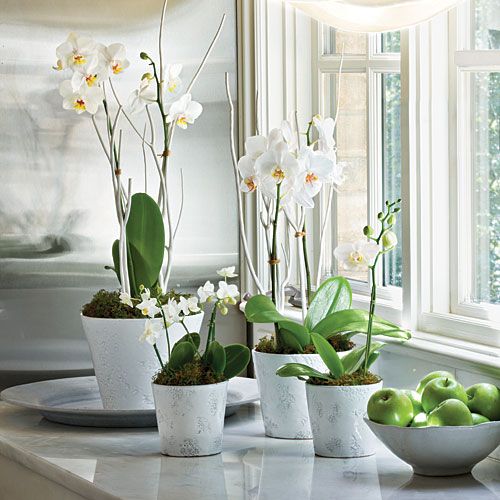
Phalaenopsis can bloom up to 3 times a year
This plant needs light. Moreover, a florist who wants to admire beautiful flowers should provide the plant with the necessary daylight hours in the autumn and winter periods. Can be used in teaching photo care for Phalaenopsis at home.
The love of sufficient light does not mean that the potty with the pet should be placed on a windowsill bathed in the sun. This location will be a test. There is a risk of leaf burn, which is characterized by the appearance of spots on leaves damaged by intense ultraviolet rays.Place a container with a flower on a window facing the west, east side, and there will be no such problems.
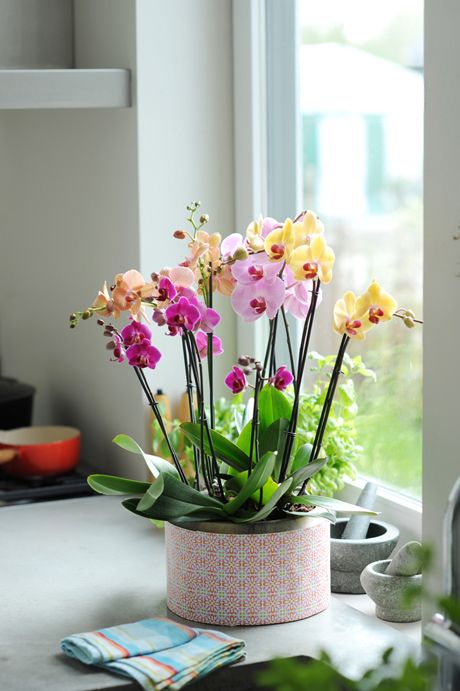
Phalaenopsis can't stand intense sunlight
Growing dendrobium
Phalaenopsis orchid nature seemed to have specially prepared for home conditions. This flower feels good both in the humid tropics and on the windowsills. Dendrobium varieties are artificially bred for indoor breeding. Flowers brought in the 19th century from European colonies were deliberately adapted by specialists to domestic conditions. Their incredible beauty served as the basis for the name of the flower.
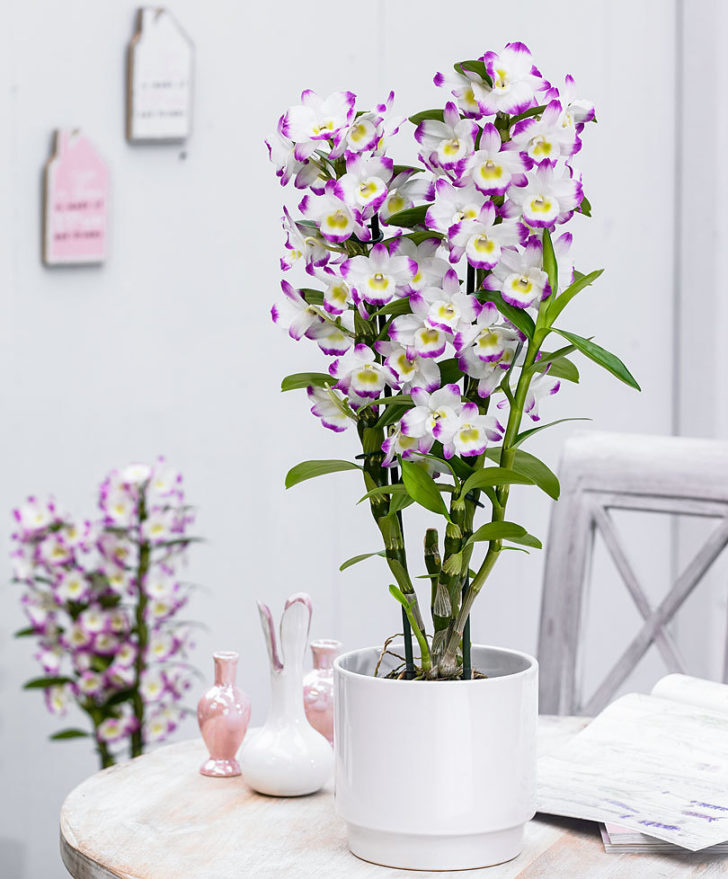
Dendrobium artificially bred for indoor breeding
In nature, the dendrobium orchid is presented in several varieties. In home cultivation, sympodial varieties are used, forming new rosettes based on old rhizomes. In the photo of Dendrobium care at home, you can see the breeding season. The full development period takes up to 4 years. During this time, the flower manages to:
- throw out a peduncle reaching 150 cm tall;
- form 2 child sockets;
- form new shoots for cuttings.
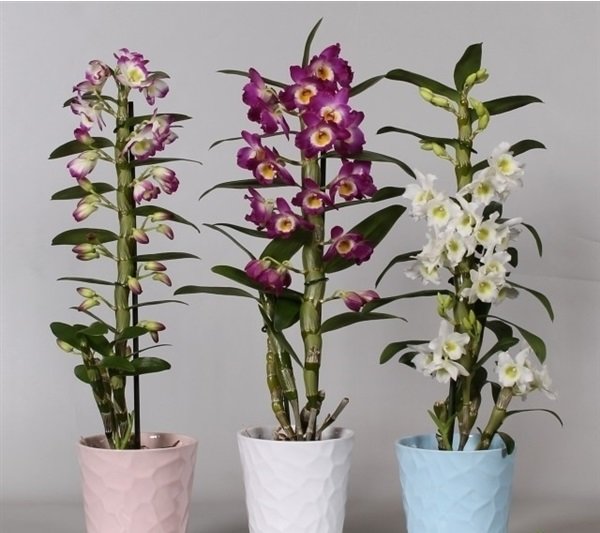
Dendrobium inflorescences can form 5-20 buds
Gardeners are offered a large number of plant varieties with straight leaves, elliptical elements. On inflorescences, 5-20 buds can be formed, collected in the form of brushes. Posted on the Internet, photos of caring for a Dendrobium orchid at home make it easy to master this process.
back to index ↑Elite ludisia in your home
Charming Phalaenopsis, Dendrobiums have become one of the most popular representatives of exotic flora. Fans of original, less common plant varieties are studying photos of Ludisia orchid care at home. This beautiful unique plant can become a worthy decoration of a winter garden, a home green corner.
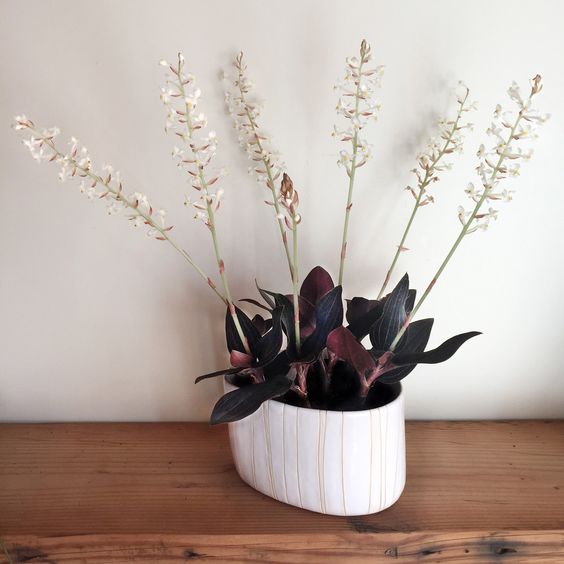
The unique orchid Ludisia
This variety of orchids has several differences:
- branched root system with short elements;
- a developed stem of a sinuous shape with several leaf rosettes;
- small height, reaching no more than 15 cm;
- sheets up to 7 cm in length, smooth on the front side, rough on the back, darker.
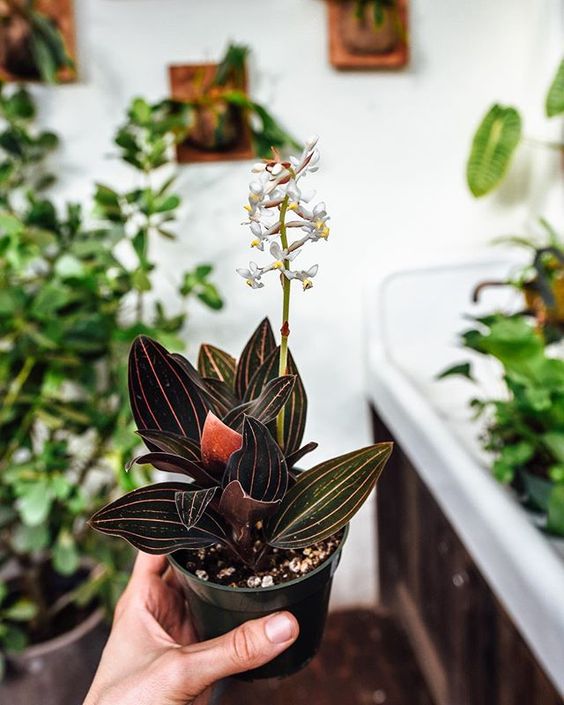
Ludisia reaches a height of no more than 15 cm
Most varieties of orchids are famous for the beauty of their flowers. In this type of houseplant, the leaf rosette is the fundamental point. The main feature of Ludisia is the exclusive pattern covering the foliage of the plant.
On the Internet, the photo of caring for the Ludisia orchid fully reflects the difficult process. The plant propagates by cuttings. They are planted in a transparent plastic pot, equipped with drainage holes in the sides. The substrate mixture is prepared from:
- sphagnum;
- crushed pine bark with needles;
- leaf humus and peat.
Roots don't go deep. The plant does not require frequent repotting. This procedure is carried out no more than once every 3 years. Ludisia develops well on windowsills located on the east, west side. She does not like drafts, in the summer she can be taken out to the balcony.
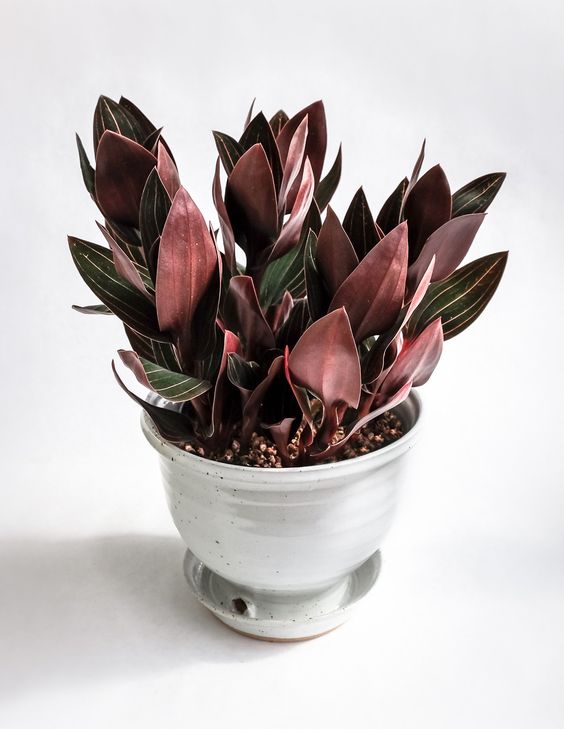
Ludisia does not require frequent repotting
Irrigation is regular throughout the year. You can look at the photo of caring for the Ludisia orchid at home on the Internet, master all the procedures. They include processing, treating a plant that attracts the attention of whiteflies, aphids, scale insects, and mealybugs. It is important to carry out pruning in a timely manner, which provides the plant with splendor.
back to index ↑Photo gallery - orchid, home care
- baby photography
Video
